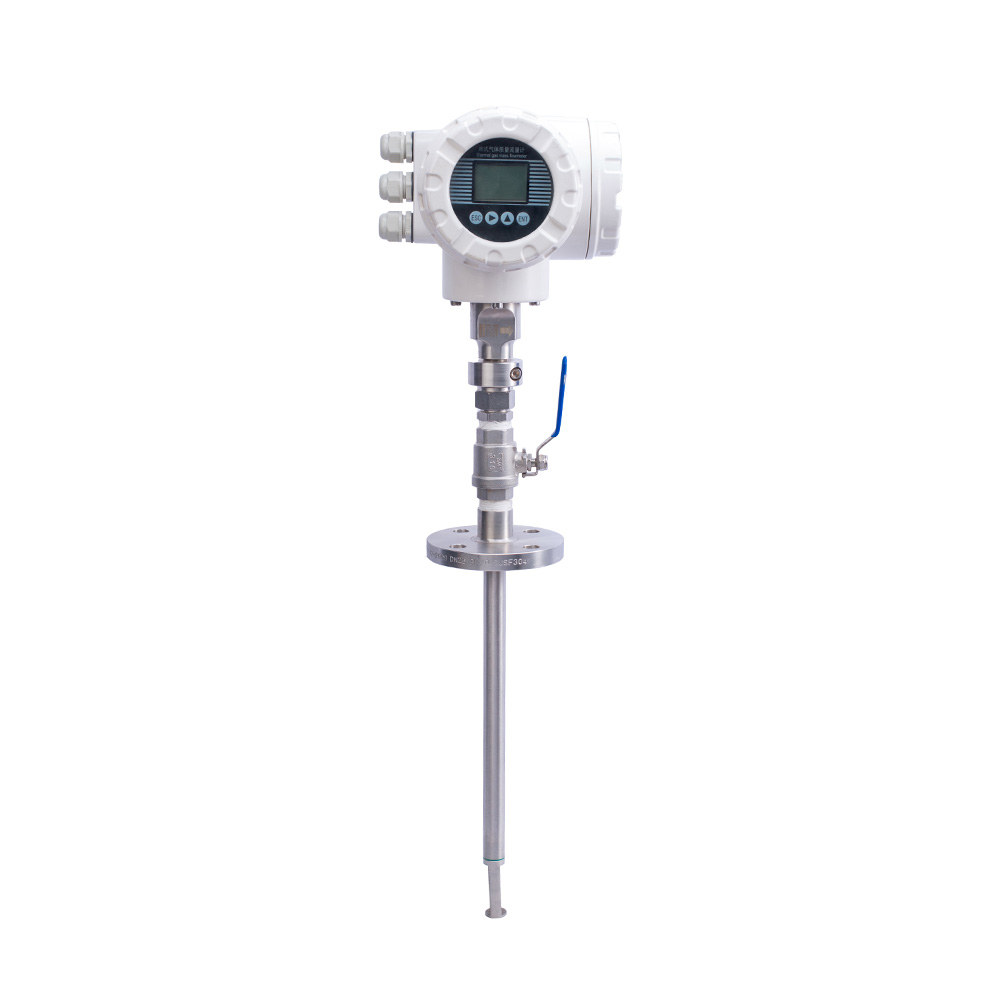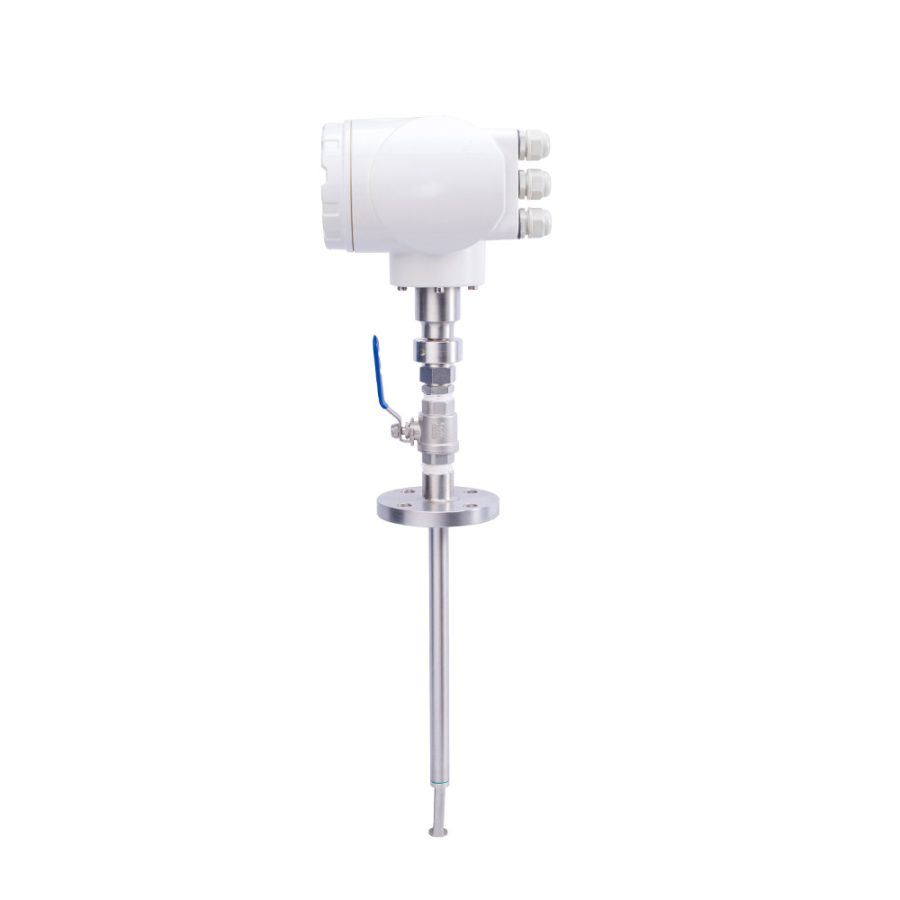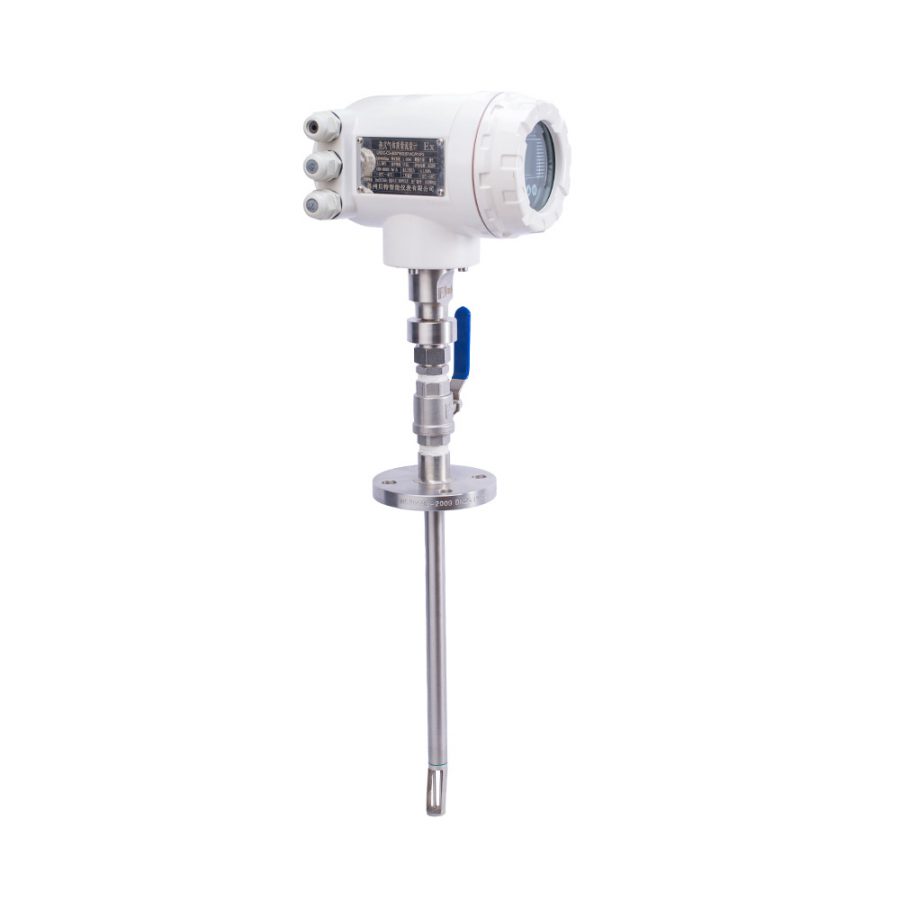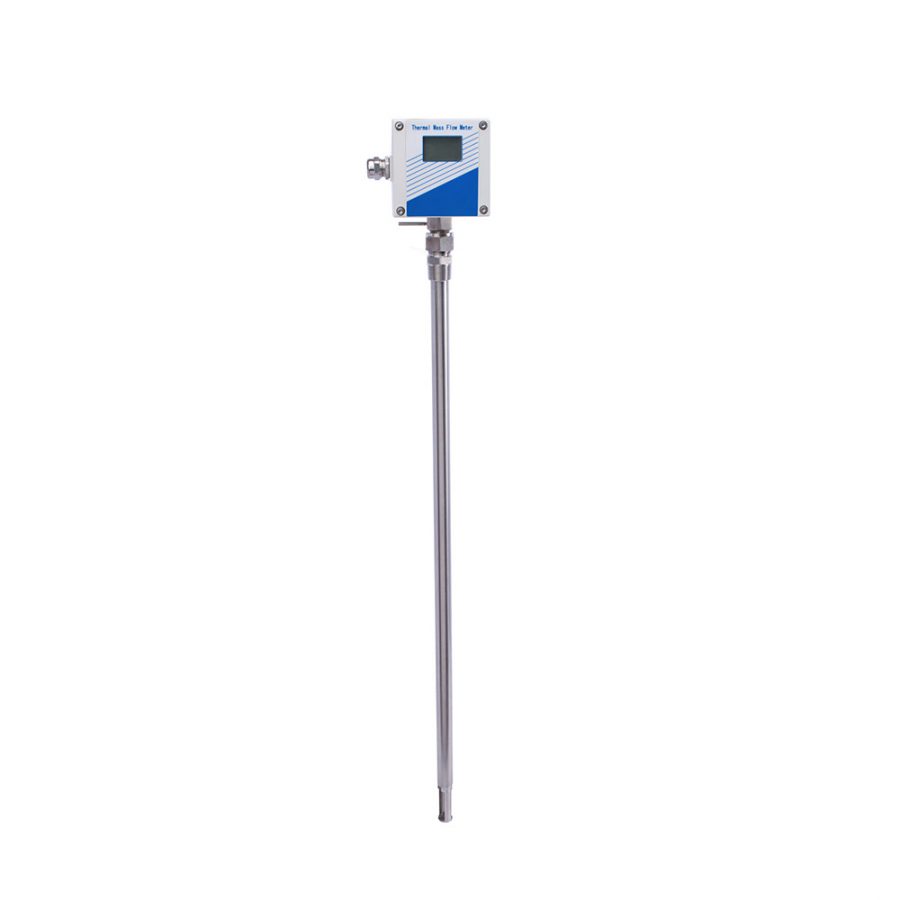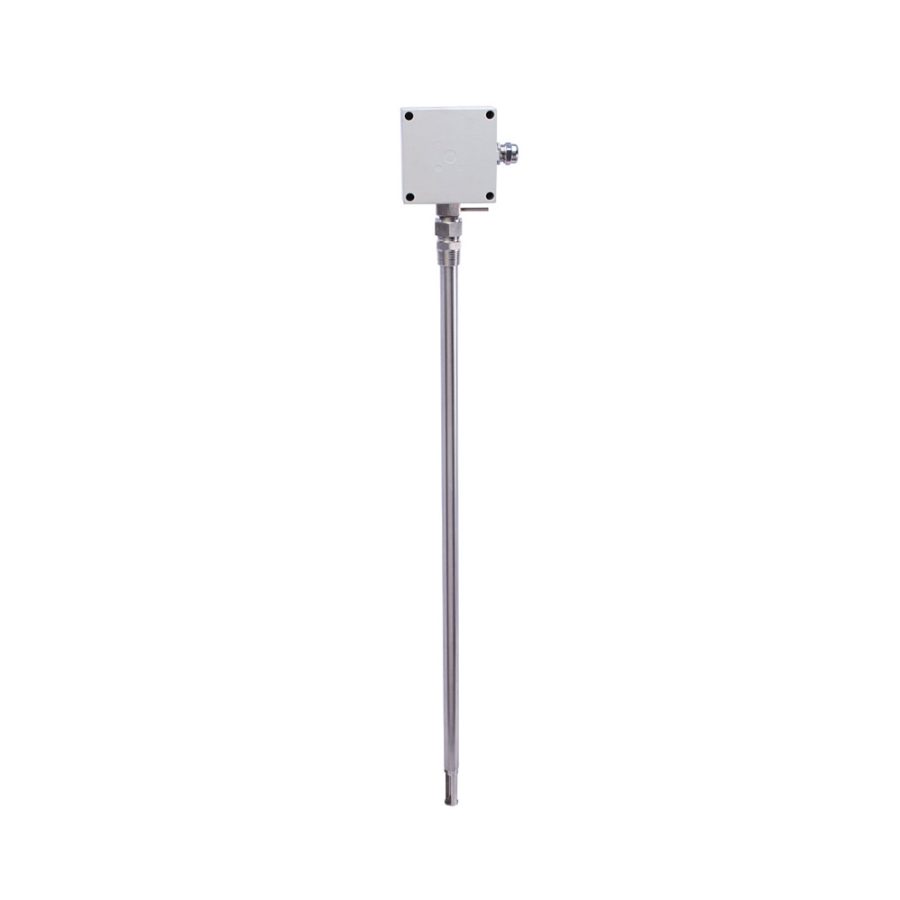Measurement principle
The sensor part of the thermal gas mass flow meter consists of two reference-grade platinum resistance temperature sensors. When the meter is working, one sensor continuously measures the medium temperature T1; the other sensor self-heats to a temperature higher than the medium temperature T2. It is used to sense the fluid flow rate and is called a velocity sensor. The temperature AT=T2-T1, T2>T1. When fluid flows through, the gas molecules collide with the sensor and take away the heat of T2, causing the temperature of T2 to drop. To keep AT constant, the power supply current of T2 must be increased. The faster the gas flows, the more heat is taken away. There is a fixed functional relationship between the gas flow rate and the increased heat. This is the constant temperature difference principle.
Product features
1. No temperature and pressure compensation is required for gas flow measurement. The measurement is convenient and accurate, and the mass flow rate or standard volume flow rate of the gas can be obtained.
2. Wide range ratio, reaching more than 100:1, can be used for gas leak detection, especially in large pipe diameter, low flow rate, large flow range change and ultra-small flow measurement.
3. Good anti-seismic performance, measurement accuracy is not affected by vibration.
Long service life, the sensor has no moving parts and pressure sensing parts, simple installation and convenient maintenance.
4. Fast response speed, small pressure loss and good repeatability.
5. Adopting digital design, overall digital circuit measurement, LCD display is intuitive and clear, and measurement is accurate.
6. Equipped with RS485 communication module or HART protocol, centralized management can be achieved with the host computer.
Flow selection table
| Diameter (mm) |
Minimum flow (Nm³/h) |
Maximum flow (Nm³/h) |
Diameter (mm) |
Minimum flow (Nm³/h) |
Maximum flow rate (Nm³/h) |
| 125 |
25 |
2500 |
1100 |
1950 |
195000 |
| 150 |
35 |
3500 |
1200 |
2280 |
228000 |
| 200 |
65 |
6500 |
1300 |
2680 |
268000 |
| 250 |
100 |
10000 |
1400 |
3100 |
310000 |
| 300 |
150 |
15000 |
1500 |
3560 |
356000 |
| 350 |
200 |
20000 |
1600 |
4050 |
405000 |
| 400 |
250 |
25000 |
1700 |
4560 |
456000 |
| 450 |
320 |
32000 |
1800 |
5150 |
515000 |
| 500 |
400 |
40000 |
1900 |
5750 |
575000 |
| 550 |
480 |
48000 |
2000 |
6350 |
635000 |
| 600 |
560 |
56000 |
2500 |
9500 |
950000 |
| 650 |
680 |
68000 |
3000 |
14000 |
1400000 |
| 700 |
780 |
78000 |
3500 |
19000 |
1900000 |
| 800 |
1000 |
100000 |
4000 |
24000 |
2400000 |
| 900 |
1300 |
130000 |
4500 |
30000 |
3000000 |
| 1000 |
1600 |
160000 |
5000 |
38000 |
3800000 |
Note 1: The flow rate (speed) range in the above flow selection table is for air, oxygen and other near-ideal gases, and varies for other gases. If users need to expand the range, they can negotiate with our company to place an order; users who measure explosive gases such as oxygen and hydrogen should pay attention to safe flow rate and cleanliness.
2: The standard state of the flow rate (speed) in the above flow selection table is 20℃, 101. 325kPa.

